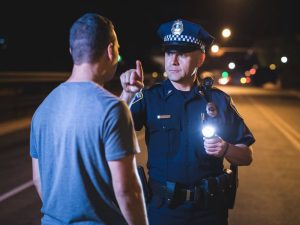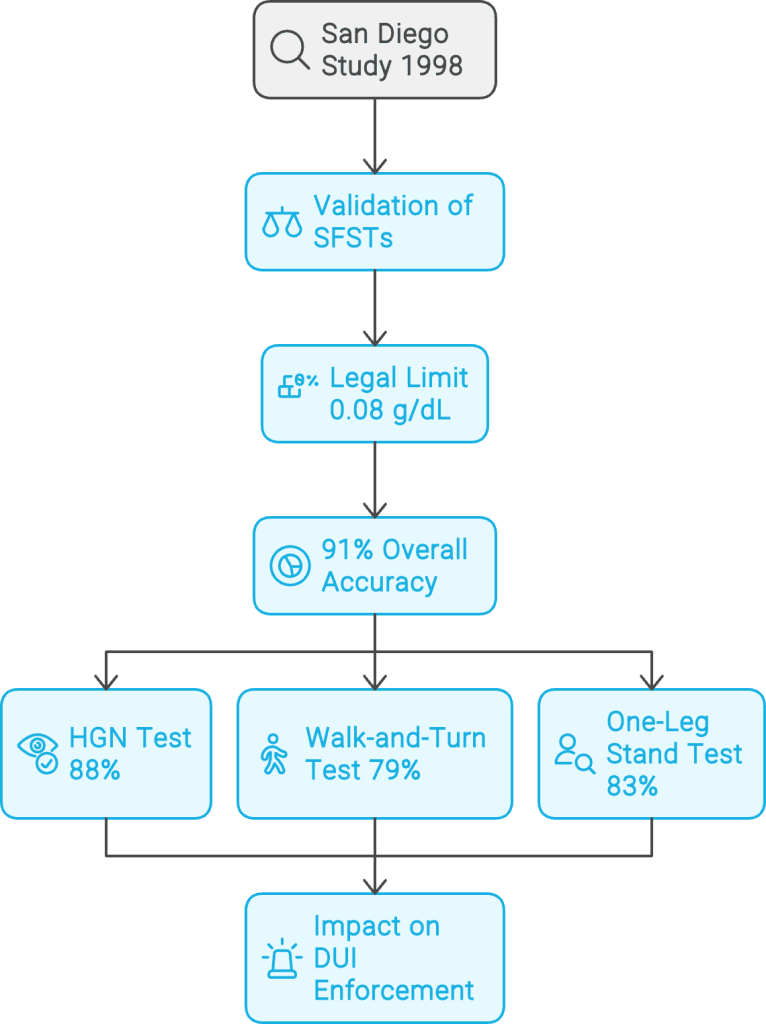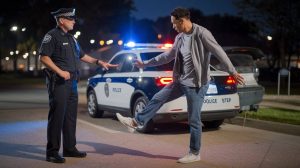The San Diego Study, conducted in 1998, stands as a cornerstone in the evaluation and validation of Standardized Field Sobriety Tests (SFSTs) for detecting drivers with blood alcohol concentrations (BAC) at or above 0.08 grams per deciliter.
As we delve deeper into this influential research, we move beyond the foundational understanding of SFSTs and the study’s methodology to examine its findings, statistical analysis, and far-reaching implications for DUI enforcement and defense strategies.
The impact of the San Diego Study on law enforcement practices and legal proceedings cannot be overstated – Bill Powers, DWI Defense Lawyer
It has shaped how officers conduct field sobriety tests, how prosecutors build their cases, and how defense attorneys challenge DUI charges.
The study’s findings have been cited in countless courtrooms across the nation, often presented as scientific evidence of the tests’ reliability.
However, as with any scientific study, especially one with such significant real-world applications, it is essential to scrutinize its results, methodology, and conclusions with a critical eye.
In this analysis, we will first examine the key findings of the San Diego Study, unpacking the reported accuracy rates for each of the three standardized tests: Horizontal Gaze Nystagmus (HGN), Walk-and-Turn, and One-Leg Stand.
We’ll explore how these findings compare to previous studies and discuss their implications for law enforcement training and courtroom testimony.
Following this, we’ll dive into a detailed statistical analysis of the study’s data.
This section will be particularly valuable for legal professionals seeking to understand the strengths and potential weaknesses of the study’s conclusions.
We’ll examine concepts such as false positive rates, statistical significance, and the practical implications of the study’s margin of error.
DUI Dexterity Tests in North Carolina
This analysis will provide a nuanced understanding of what the numbers truly tell us about the reliability of SFSTs in predicting BAC levels.
As we progress through this examination, we’ll maintain a balanced perspective, acknowledging both the strengths of the study and areas where questions or controversies have arisen.
Our goal is to equip readers – whether they be legal professionals, law enforcement officers, or individuals seeking to educate themselves about DUI procedures – with a comprehensive understanding of the San Diego Study’s findings and their implications.
This in-depth analysis will hopefully serve as a valuable resource for anyone involved in DUI charges, providing insights that can inform both prosecution and defense strategies.
inform both prosecution and defense strategies.
It will also contribute to the broader discussion about the role of field sobriety tests in our legal system and the ongoing efforts to balance public safety with individual rights.
As we embark on this detailed exploration of the San Diego Study’s findings and their statistical underpinnings, we invite readers to approach the information with an open and critical mind.
The law, science, and public policy are complex, and a thorough understanding of these elements is invaluable in navigating the challenges presented by DUI cases in our legal system.
Key Findings of the San Diego Study: Accuracy Rates and Implications
The San Diego Study, conducted in 1998, aimed to validate the Standardized Field Sobriety Tests (SFSTs) at blood alcohol concentrations (BACs) below 0.10 percent, specifically focusing on the then-newly established legal limit of 0.08 g/dL.
The study’s findings have had a profound impact on DUI enforcement and legal proceedings across the United States. Let’s examine the key results and their implications in detail.
The study reported impressive overall accuracy rates for the SFSTs in identifying drivers with BACs at or above 0.08 g/dL.
According to the published results, the combined battery of tests demonstrated a 91% accuracy rate. This high percentage has been frequently cited in courtrooms and police training programs as evidence of the tests’ reliability.
Breaking down the results for individual tests, the study found that the Horizontal Gaze Nystagmus (HGN) test was 88% accurate, the Walk-and-Turn test was 79% accurate, and the One-Leg Stand test was 83% accurate in identifying individuals with BACs at or above the legal limit.
These figures suggest that while each test has predictive value, the HGN test appears to be the most reliable individual indicator.
It’s important to note that the study’s definition of accuracy was based on officers’ decisions to arrest or release drivers, compared to the drivers’ actual BACs.
This means that “accuracy” in this context refers to correct arrest decisions rather than precise BAC predictions.
One significant finding was that officers’ overall decisions to arrest or release drivers were correct in 91% of the cases, matching the accuracy rate of the combined SFSTs.
This correlation has been used to argue for the validity of SFSTs as a reliable tool for officers in making arrest decisions.
However, the study also revealed some noteworthy details that are often overlooked in discussions of its findings. For instance, the average BAC of the 217 people arrested during the study was 0.150 g/dL, nearly twice the legal limit.
This high average BAC raises questions about the tests’ effectiveness in identifying drivers who are just over the legal limit versus those who are significantly impaired.
Moreover, the study found that among the 24 individuals incorrectly arrested (false positives), nine had BACs between 0.07 and 0.08 g/dL.
The authors argued that these cases should be considered “correct” arrests due to the small margin of error in BAC testing and the impairment that can occur even at BACs slightly below the legal limit.
This interpretation has been a point of contention in legal debates, particularly among Rule 702 Expert Witnesses.
The San Diego Study’s findings have had far-reaching implications for DUI enforcement and prosecution. Law enforcement agencies across the country have incorporated these results into their training programs, emphasizing the purported high accuracy rates of SFSTs.
Officers are often taught to rely heavily on these tests when making arrest decisions, particularly the HGN test, which showed the highest individual accuracy rate.
DUI Punishments in North Carolina
In courtrooms, prosecutors frequently cite the study’s findings to bolster the credibility of SFST evidence. The reported 91% accuracy rate is often presented to juries as scientific validation of an officer’s decision to arrest based on SFST performance.
This can be a powerful tool in convincing juries of a defendant’s guilt, especially in cases where chemical test results are unavailable or contested.
However, defense attorneys have found grounds to challenge the study’s conclusions.
They often point out that the study’s  conditions – with specially trained officers in an alcohol enforcement unit – may not reflect the reality of most DUI stops.
conditions – with specially trained officers in an alcohol enforcement unit – may not reflect the reality of most DUI stops.
Additionally, the high average BAC of arrested individuals in the study may overstate the tests’ effectiveness in borderline cases.
The implications of the San Diego Study extend beyond the courtroom as well. Its findings have influenced public policy, supporting the continued use and development of SFSTs as a primary tool in combating drunk driving.
The study has been used to justify the allocation of resources for SFST training and implementation across law enforcement agencies.
It’s worth noting that while the San Diego Study focused on the 0.08 g/dL threshold, many jurisdictions have since lowered their legal BAC limits further.
This raises questions about the applicability of the study’s findings to these new, lower limits and whether additional validation studies are needed.
Initial Summary: SFSTs and Impaired Driving
As we’ve explored the key findings of the San Diego Study, it becomes clear that a deeper examination of the statistical analysis behind these results is warranted.
In our next article, “Deconstructing the Data: A Statistical Deep Dive into the San Diego Study,” we’ll peel back the layers of the study’s numerical foundation.
We’ll investigate the intricacies of false positive rates, examine the study’s sample size and its implications, and explore how statistical significance plays a role in interpreting the results.
This forthcoming analysis will provide critical insights for legal professionals, offering a nuanced understanding of the study’s strengths and potential limitations. By delving into these statistical details, we’ll equip readers with the knowledge to more effectively evaluate SFST evidence in DUI cases and understand the broader implications for law enforcement practices and legal strategies.
 Carolina Criminal Defense & DUI Lawyer Updates
Carolina Criminal Defense & DUI Lawyer Updates